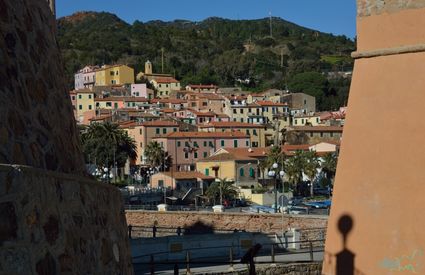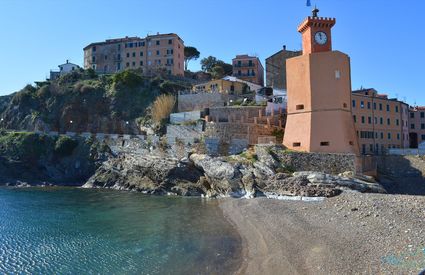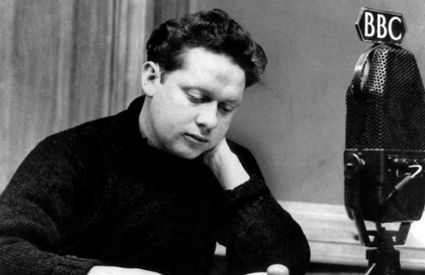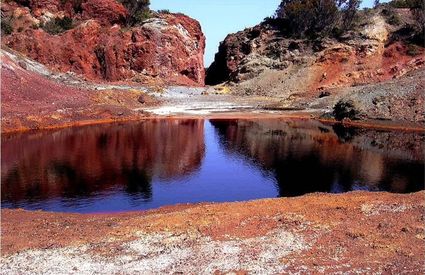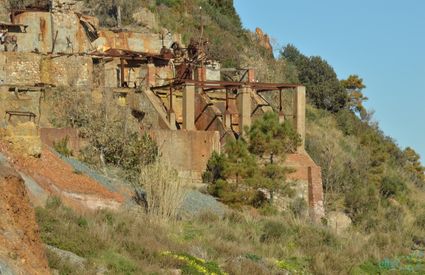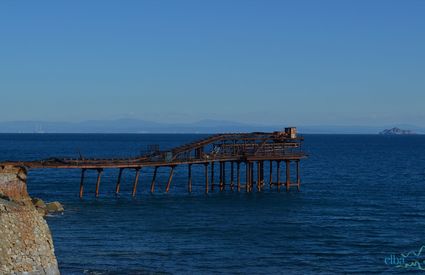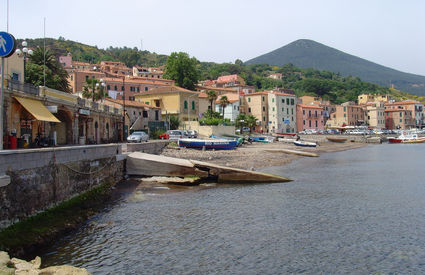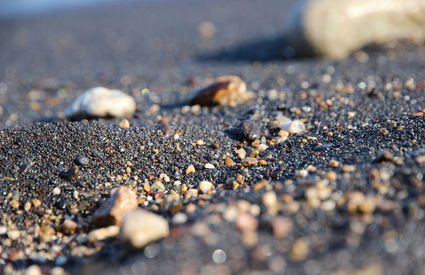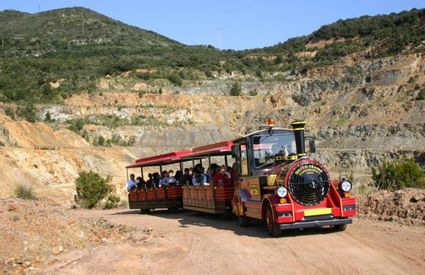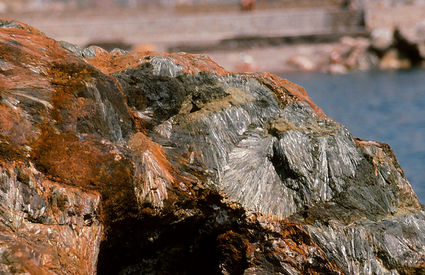Rio
An “incredible town” where the streets shine
My village is there, on the sea, just like in the old oleographs. Homes here seem to begrudge the passage of time (Luigi Berti)
An “incredible town” where the streets shine
My village is there, on the sea, just like in the old oleographs. Homes here seem to begrudge the passage of time (Luigi Berti)
An incredible town
How lucky Napoleon was! This is a beautiful island and Rio Marina is its most incredible village. Brawls are banned in every bar. Cognac dell’Elba is dirt cheap. Dylan Thomas wrote this on a postcard while spending the summer of 1947 here, where he wrote In Country Sleep, the most beautiful of all his poems. For the great Welsh poet and Rio Marina, it was love at first sight: he adored its wild and rugged landscape, its narrow streets, winding staircases and the comings and goings of donkeys and goats. In the dive joints and dimly lit osterias, he didn’t feel far from his Wales—he found the same types of gruff, old-fashioned folks: a planet in and of itself, shaped and marked by centuries of mining tradition.
A town of miners and warriors
In the olden days, the area quarrymen would extract iron from the grottoes in the heart of the mountains to follow the flow of the currents; centuries later, using gunpowder, they would dig in the open air, conquering the stone with the mines. It went on like this until the industrial revolution shook up the old way of doing things economically and socially, imposing inhumane hours that kept the miners from cultivating their own roots. And the Rio Marina residents, holding a history of struggle going back to the 18th century on their shoulders, pulled themselves up by the bootstraps: in 1848 they freed political detainees, driving away the mine director and handing over a workday in favor of the Republic of Venice; in 1911 with an epic strike that lasted four months, in which they were joined by local sailors; and, in 1920, during the settimana rossa, with the occupation of the mine and operational autonomy.
A town of sailors
In the area’s three naval shipyards, the masters of the hatchet constructed magnificent cargo ships which, commanded and equipped by people from Rio, triumphantly carried the name of our small but bold town across the ocean, all the way to Río de la Plata. A fleet, our own, that over three centuries, was ransacked by wars and pirate attacks, ended up going on to become one of the Peninsula’s most active and appreciated of its kind. The navy was not short on struggles, either: in 1849, the ship masters, emboldened by the new political climate, rebelled and forced the wealthiest owners to submit to a democratically elected delegation, which would make for more evenly balanced mineral and cast iron journeys. At the same time, the sailors focused on stowing of the ships formed a type of cooperative to force the Tuscan government self-managed work shifts and more just payments.
Our heritage
Out of our past, we inherited a free spirit and social tendencies. Even traditional cuisine in this region originates from our past of miners and wayfarers. And, if our sea-based history, in addition to the famous Tonietti mausoleum by Adolfo Coppedè, brought us love and skills for the sea and sails, our history of miners, beyond just a unique landscape, dominated by yellow and red ochres of abandoned quarries, left us a vast mining area now designated as a park, an important mineralogical museum and thousands of ematite crystals that make the beaches and streets glow.


